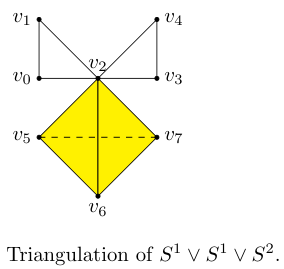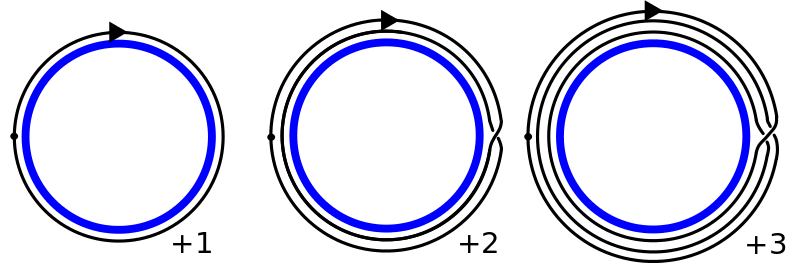For problem 3 on the computational topology homework, I’m trying to find a pair of spaces that have the same homology groups, but are not homotopy equivalent. After talking to Patrick he mentioned comparing the torus and .

After computing their corresponding Betti numbers over , I found that for both the torus and the homology groups are
Which just leaves proving that they are not homotopy equivalent.
Patrick thinks you can do it by looking at the homotopy groups. While we haven’t covered homotopy groups in class, I feel it is worth a try. Primarily by showing that the fundamental groups are not isomorphic.
The following notes are from reading the Wikipedia page on the fundamental group: https://en.wikipedia.org/wiki/Fundamental_group.
Fundamental Group
Given a topological space , we define a loop based at to be a continuous map such that . Then a homotopy between two loops (both based at ) would be a map such that and for all . If such a map exists, then and are homotopy equivalent, denoted .
The fundamental group is given by the equivalence classes of loops based at .
Fundamental Group
where is homotopy equivalence.
Looking at the name fundamental group suggests this set is a group. We define the product of two loops as a new loop given by
In other words, we follow loop twice as fast then follow twice as fast. Thus, the fundamental group has product for two equivalence classes . One may show this operator satisfies the group requirements.
Fundamental Group of Circle
Let . Notice that any loop based at simply starts at then goes along the circle times before stopping at .

Thus, for a loop that revolves -times and a loop that revolves -times, the product revolves -times. Therefore, one can see that .
Fundamental Group of 2-Sphere
Let and consider any loop based at . Then one may show that the image of is contractible. That is, is homotopy equivalent to the trivial loop. Therefore, the fundamental group is trivial.

Fundamental Group of Products and Coproducts
Let be a continuous map between topological spaces. Let and . If we take any loop with base point in , we can compose with to get a loop with base point in . One may show that this induces a homomorphism
between fundamental groups.
This pattern gives a rise to the fundamental group functor .
One consequence of this is that two homotopy equivalent path-connected spaces have isomorphic fundamental groups. Or more importantly for solving problem 3, two spaces with different fundamental groups are not homotopy equivalent.
The fundamental group functor can be shown to map products to products and coproducts to coproducts. Therefore, if and are path connected, then
and if they are locally contractible on top of that,
where represents the free product of groups.
Solving Problem 3
Given the above, the torus has fundamental group and the wedge sum has fundamental group . If we look at the representations, we see that
which are not isomorphic.